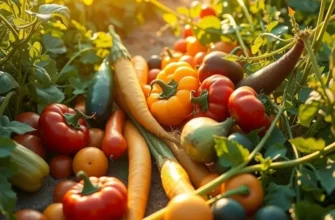Preparing healthy snacks ahead of time can be a game changer for anyone striving to maintain a balanced diet. It offers convenience, reduces the temptation of unhealthy choices, and ensures that you always have nutritious options on hand. Whether you’re new to nutrition or looking to refine your eating habits, mastering the art of making healthy snacks can be both enjoyable and rewarding. Here are tips to get you started.
Choosing Nutrient-Dense Ingredients

The foundation of any healthy snack is selecting the right ingredients. Prioritize whole foods over processed options to maintain the integrity of nutrients essential for health. Whole foods such as fruits, vegetables, nuts, seeds, and grains are unprocessed and provide a wealth of vitamins, minerals, and antioxidants. They are the natural choice for those looking to infuse their snacks with maximum nutrients.
Nutrient-dense snacks should be balanced with proteins, healthy fats, and fiber. These components satiate hunger and support various health goals. Proteins are vital for muscle repair and growth. Incorporate natural sources like nuts, seeds, or legumes. They add not just proteins but also a satisfying crunch and flavor to your snacks. Healthy fats found in avocados, nuts, and seeds contribute to cardiovascular health. These fats are essential for the absorption of fat-soluble vitamins such as A, D, E, and K. Additionally, sprinkling some flaxseeds or chia seeds into snacks can boost omega-3 intake, beneficial for brain health.
Fiber is another crucial component that aids in digestion and helps maintain stable blood sugar levels. Choose whole grains, fresh fruits, and vegetables as snack bases. Berries, especially, are a great choice—they’re packed with fiber and antioxidants, perfect for a midday energy boost.
Reading labels becomes crucial when venturing into packaged snack options. Identify whole food-based ingredients as primary components. Avoid products with long ingredient lists, especially those high in sugars, sodium, or artificial additives. Check for hidden sugars and oils masked under names like “maltose” or “hydrogenated oils.”
To enhance your snacks’ nutritional profile without sacrificing flavor, begin experimenting with herbs and spices. Incorporating natural flavor boosters can also be a great alternative to adding salt, improving taste while maintaining heart health. If interested in learning more, check this guide on flavor boosting without salt.
Ultimately, learning to choose nutrient-rich ingredients ensures that your snacks contribute positively to your health goals. By investing a bit of time in understanding the components that make up these snacks, you can transform your eating habits while indulging in creations that are both delicious and beneficial.
Batch Preparation Techniques

Once you’ve selected the right ingredients, mastering batch preparation techniques is essential. This approach not only saves time but also ensures you stay aligned with your nutrition goals. Begin by setting aside a dedicated time each week for your snack-making sessions. This minimizes daily interruptions and allows you to crack on without rushing.
Plan with Purpose
Start with a plan. Outline the snacks you wish to prepare and the quantities you’ll need for the week. Consider your schedule and how many meals you need to supplement with snacks each day. This foresight will help you avoid mid-week runs to the store.
Portioning with Precision
Once your plan is in place, focus on portioning. Measure out the quantities you need per snack to prevent overeating. Using a kitchen scale or measuring cups can bring precision. Divide your ingredients into single-serving portions using small containers or resealable bags. This not only curbs overeating but keeps your snacks fresh longer.
Container Wisdom
Invest in a variety of containers suitable for different types of snacks. Glass jars are great for dry snacks like nuts and seeds, while airtight boxes can keep fruits or veggie slices crisp. Stackable containers optimize fridge or pantry space, maintaining an organized storage system that’s easy to navigate.
For further advice on efficient kitchen storage ideas, check out Eco-smart kitchen storage.
Meal Prepping Techniques
Use meal prep techniques to simplify snack creation. Prepare larger batches of nutritious recipes like granola bars or energy bites that last all week. Freeze any surplus to extend their shelf life. Incorporate variety by rotating recipes every few days.
Snack Ideas
Consider these options for healthy batch-prepared snacks:
- Chia Seed Pudding: Easy to assemble and customize with your favorite toppings.
- Veggie Bites: Pre-cooked and portioned quiches or frittatas packed with vegetables.
- Fruit and Nut Mix: A classic combo, easy to portion and store.
- Homemade Hummus: Pair with pre-cut veggie sticks in separate containers.
Batch preparation doesn’t just automate snack readiness; it promotes mindful eating habits. By eliminating the guesswork and chaos daily snack decisions might bring, you support your health journey with convenience and consistency.
Final words
By incorporating these tips into your routine, preparing healthy snacks ahead can become an effortless part of your lifestyle. Choosing nutrient-dense ingredients while mastering batch preparation techniques not only saves time but also enhances your overall nutrition. Embrace the joy of healthy snacking by having delicious, wholesome options readily available. This proactive approach can empower you to make better food choices, keeping you aligned with your wellness goals. Remember, small changes can lead to significant improvements.







